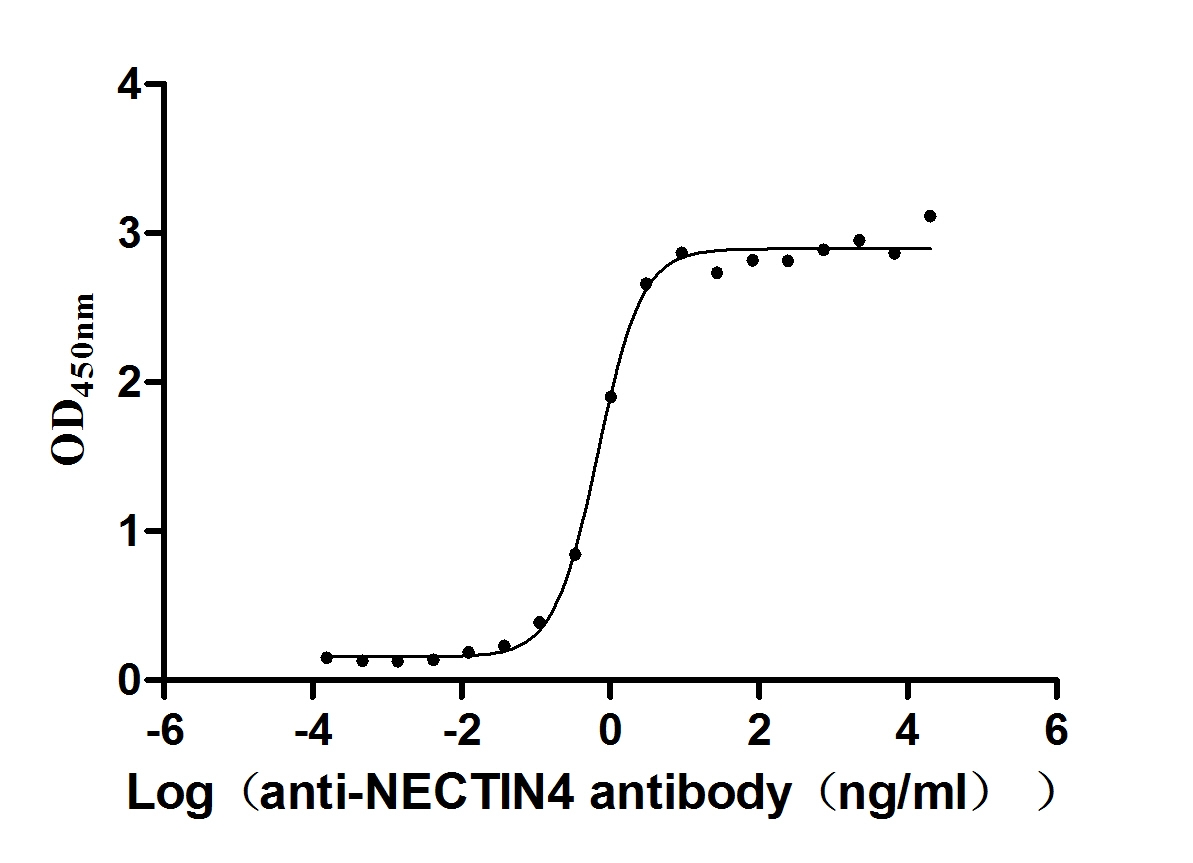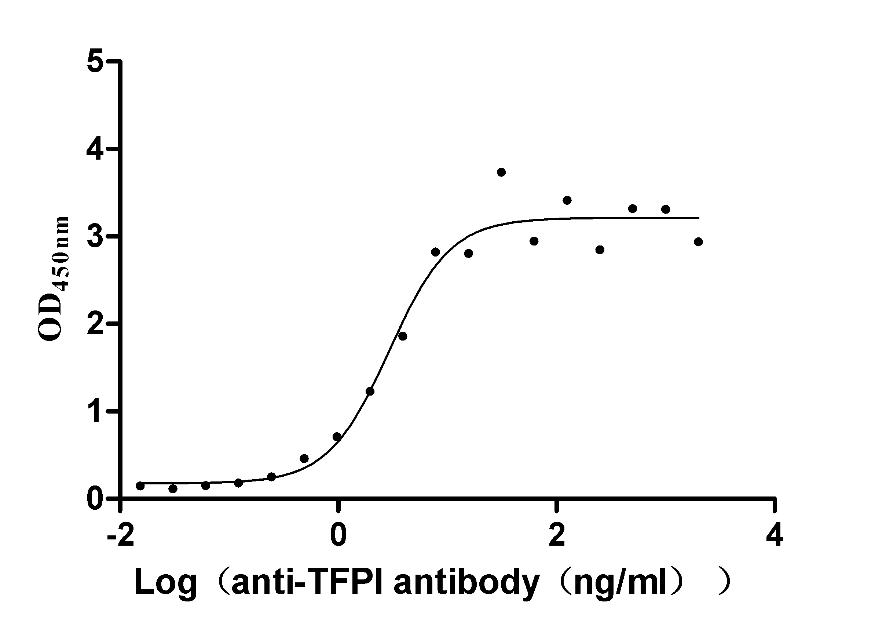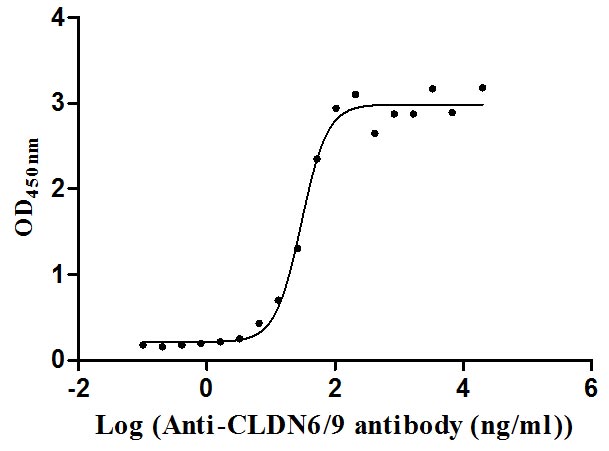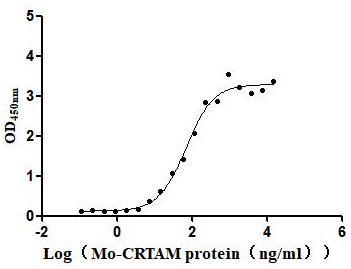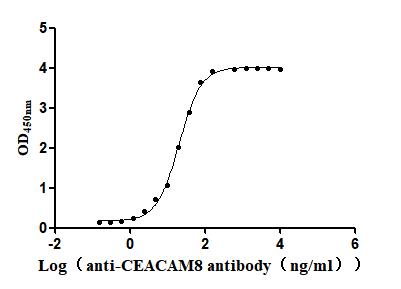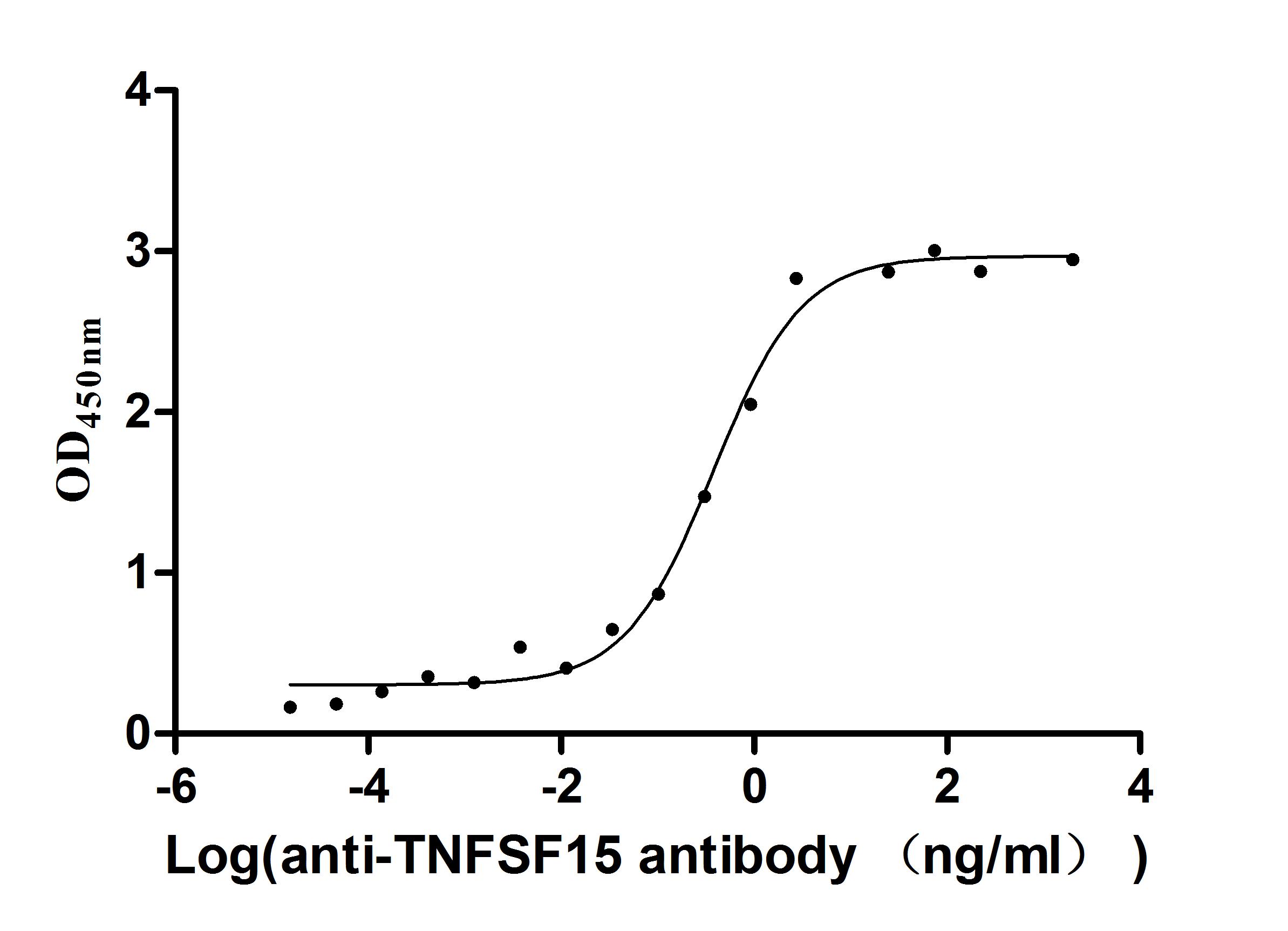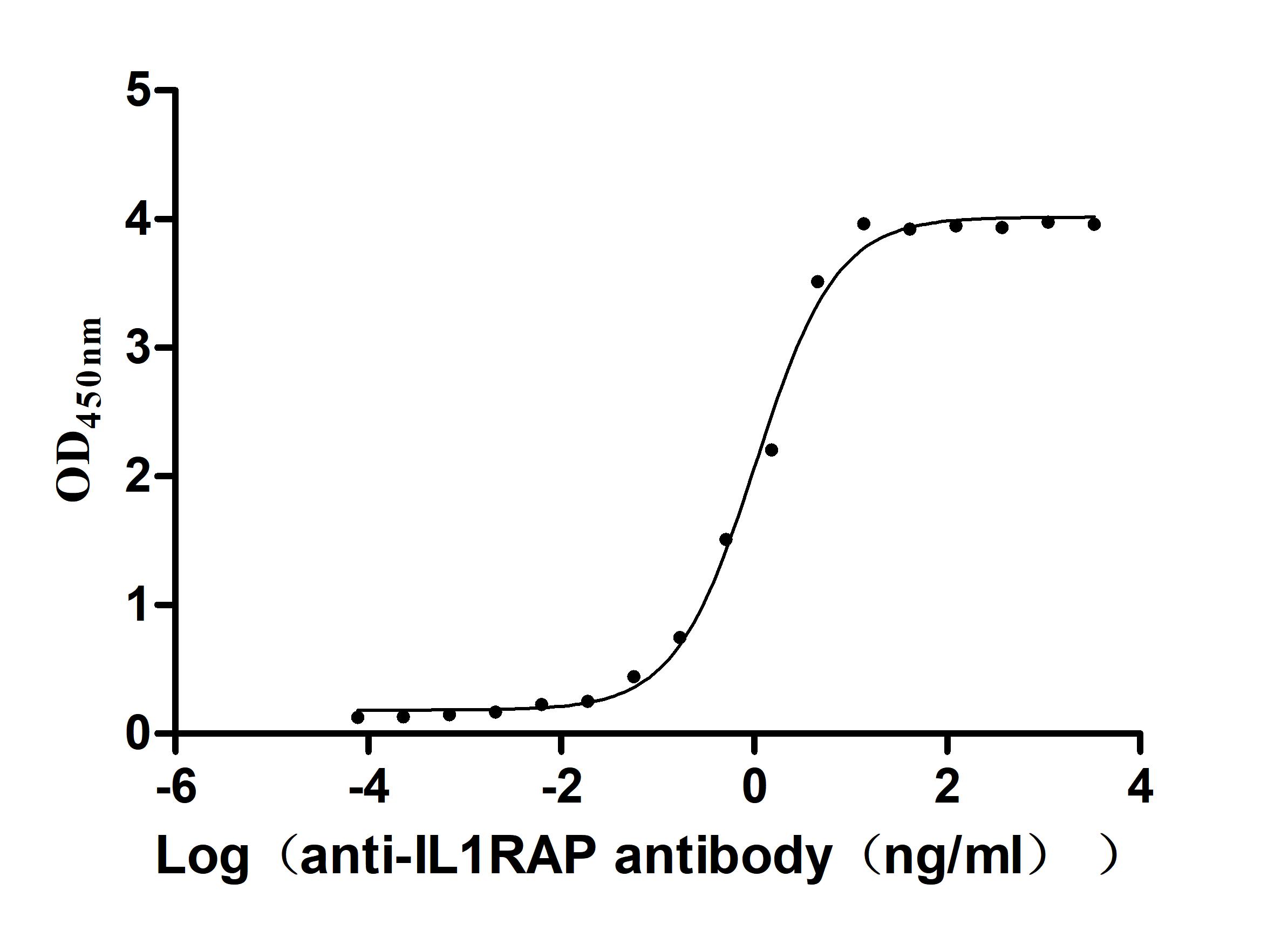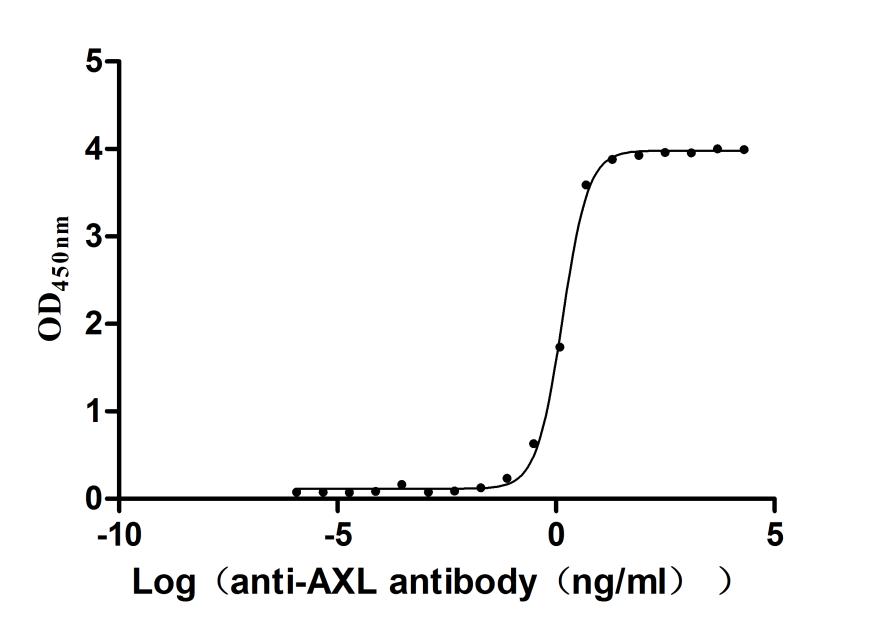Recombinant Human Potassium voltage-gated channel subfamily E member 2 (KCNE2), partial
-
中文名稱:人KCNE2重組蛋白
-
貨號:CSB-YP896548HU
-
規格:
-
來源:Yeast
-
其他:
-
中文名稱:人KCNE2重組蛋白
-
貨號:CSB-EP896548HU
-
規格:
-
來源:E.coli
-
其他:
-
中文名稱:人KCNE2重組蛋白
-
貨號:CSB-EP896548HU-B
-
規格:
-
來源:E.coli
-
共軛:Avi-tag Biotinylated
E. coli biotin ligase (BirA) is highly specific in covalently attaching biotin to the 15 amino acid AviTag peptide. This recombinant protein was biotinylated in vivo by AviTag-BirA technology, which method is BriA catalyzes amide linkage between the biotin and the specific lysine of the AviTag.
-
其他:
-
中文名稱:人KCNE2重組蛋白
-
貨號:CSB-BP896548HU
-
規格:
-
來源:Baculovirus
-
其他:
-
中文名稱:人KCNE2重組蛋白
-
貨號:CSB-MP896548HU
-
規格:
-
來源:Mammalian cell
-
其他:
產品詳情
-
純度:>85% (SDS-PAGE)
-
基因名:KCNE2
-
Uniprot No.:
-
別名:KCNE2; Potassium voltage-gated channel subfamily E member 2; MinK-related peptide 1; Minimum potassium ion channel-related peptide 1; Potassium channel subunit beta MiRP1
-
種屬:Homo sapiens (Human)
-
蛋白長度:Partial
-
蛋白標簽:Tag?type?will?be?determined?during?the?manufacturing?process.
The tag type will be determined during production process. If you have specified tag type, please tell us and we will develop the specified tag preferentially. -
產品提供形式:Lyophilized powder
Note: We will preferentially ship the format that we have in stock, however, if you have any special requirement for the format, please remark your requirement when placing the order, we will prepare according to your demand. -
復溶:We recommend that this vial be briefly centrifuged prior to opening to bring the contents to the bottom. Please reconstitute protein in deionized sterile water to a concentration of 0.1-1.0 mg/mL.We recommend to add 5-50% of glycerol (final concentration) and aliquot for long-term storage at -20℃/-80℃. Our default final concentration of glycerol is 50%. Customers could use it as reference.
-
儲存條件:Store at -20°C/-80°C upon receipt, aliquoting is necessary for mutiple use. Avoid repeated freeze-thaw cycles.
-
保質期:The shelf life is related to many factors, storage state, buffer ingredients, storage temperature and the stability of the protein itself.
Generally, the shelf life of liquid form is 6 months at -20°C/-80°C. The shelf life of lyophilized form is 12 months at -20°C/-80°C. -
貨期:Delivery time may differ from different purchasing way or location, please kindly consult your local distributors for specific delivery time.Note: All of our proteins are default shipped with normal blue ice packs, if you request to ship with dry ice, please communicate with us in advance and extra fees will be charged.
-
注意事項:Repeated freezing and thawing is not recommended. Store working aliquots at 4°C for up to one week.
-
Datasheet :Please contact us to get it.
相關產品
靶點詳情
-
功能:Ancillary protein that assembles as a beta subunit with a voltage-gated potassium channel complex of pore-forming alpha subunits. Modulates the gating kinetics and enhances stability of the channel complex. Assembled with KCNB1 modulates the gating characteristics of the delayed rectifier voltage-dependent potassium channel KCNB1. Associated with KCNH2/HERG is proposed to form the rapidly activating component of the delayed rectifying potassium current in heart (IKr). May associate with KCNQ2 and/or KCNQ3 and modulate the native M-type current. May associate with HCN1 and HCN2 and increase potassium current. Interacts with KCNQ1; forms a heterooligomer complex leading to currents with an apparently instantaneous activation, a rapid deactivation process and a linear current-voltage relationship and decreases the amplitude of the outward current.
-
基因功能參考文獻:
- On the basis of clinical phenotype, the high allelic frequencies of LQT6 mutations in the Exome Aggregation Consortium database, and absence of previous documentation of genotype-phenotype segregation, our findings suggest that many KCNE2 variants, and perhaps all, have been erroneously designated as LQTS-causative mutations. Instead, KCNE2 variants may confer proarrhythmic susceptibility when provoked by additional envir PMID: 28794082
- These results demonstrate that KCNE2 is required for normal beta-cell electrical activity and insulin secretion, and that Kcne2 deletion causes T2DM. PMID: 28280005
- The identification of Filamin C as a novel KCNE2 ligand not only enhances current understanding of ion channel function and regulation, but also provides valuable information about possible pathways likely to be involved in long-QT syndrome pathogenesis PMID: 26956495
- KCNE2 has been widely studied since its role in the heart was discovered; it is association with inherited and acquired human Long QT syndrome; physiological analyses together with genetics studies have uncovered a startling array of functions for KCNE2, in the heart, stomach, thyroid and choroid plexus. [Review] PMID: 26123744
- Women with elevated BMI have enhanced hERG activity as a result of low beta-inhibitory protein expression, which likely contributes to weak contractions and poor labour outcomes. PMID: 24937480
- M54T MiRP1 mutation axecerbate drug-induced long QT syndrome and arrhythmia. PMID: 24631769
- The effect of KCNE2 mutations on KV7.1 was abolished in the presence of the major IKs beta-subunit KCNE1, when coexpressed in a 1:1:1 molar ratio. PMID: 24796621
- Mutations in KCNE2 has been shown to cause familial atrial fibrillation. PMID: 24460807
- The transmembrane domains (TMDs) of KCNE1 and KCNE2 were illustrated to associate with the KCNQ1 channel in different modes. PMID: 24827085
- study concluded that the variants in KCNQ1, KCNH2, KCNE1 and KCNE2 genes may be correlated with the occurrence of part of sudden unexplained nocturnal death syndrome cases in southern China PMID: 23890619
- Subjects with LQT-PM may have longer QTc intervals at rest and at peak exercise and all phases of the recovery period compared to controls. Those with homozygous SNPs (KCNE2 1%) had longer resting QTc intervals when compared to heterozygotes. PMID: 23714088
- Case Report: reduced expression of KCNE2 in surgically excised tissue from human gastric cancer associated with gastritis cystica profunda. PMID: 23483772
- KCNE1 and KCNE2, auxiliary subunits of voltage-gated potassium channels, undergo sequential cleavage mediated by either alpha-secretase and presenilin(PS)/gamma-secretase or BACE1 and PS/gamma-secretase in cells. PMID: 23504710
- The known interactions of the KCNE2 protein and the resulting functional effects, the effects of mutations in KCNE2 and their clinical role are discussed. [review] PMID: 22166675
- KCNE2 can modulate its partner channel function not only by altering channel conductance and/or gating kinetics, but also by affecting protein stability. PMID: 22180649
- Backbone assignments of most MiRP1 residues were achieved through a series of triple resonance NMR experiments. PMID: 21087668
- Results suggest KCNE2 disruption as a possible risk factor for gastric neoplasia. PMID: 20625512
- KCNE2 plays a role in normal function of native I(to) channel complex in human heart, M54T and I57T variants lead to gain of function of I(to), contributing to generating potential arrhythmogeneity and pathogenesis for inherited fatal rhythm disorders. PMID: 20042375
- The accelerated inactivation time course of HERG/MiRP1(V65M) channels may decrease I(Kr) current density of myocardial cells, thereby impairing the ability of myocytes to repolarize in response to sudden membrane depolarizations such as extrasystoles. PMID: 12185453
- KCNE2, by modulating I(f) or I(h) currents, might thus contribute to the electrophysiological diversity of known pacemaking currents in the heart and brain PMID: 12856183
- Most significant effects of MiRP1 subunits on HERG channels were more negative steady-state activation for HERG + T8A MiRP1 and more positive steady-state activation for HERG + M54T MiRP1 compared to either HERG + WT MiRP1 or HERG alone. PMID: 12923204
- KCNE2 protein is expressed in ventricles, and it can play diverse roles in ventricular electrical activity under (patho)physiological conditions. PMID: 15066947
- KCNE2 R27C is a gain-of-function mutation associated with the initiation and/or maintenance of Atrial Fibrillation. PMID: 15368194
- These results suggest that KCNE2 can functionally couple to KCNQ1 even in the presence of KCNE1. PMID: 16631607
- We demonstrated that 9.5% of cases diagnosed as SIDS carry functionally significant genetic variants in LQTS genes (KCNQ1, KCNH2, SCN5A, KCNE1, KCNE2, KCNJ2, CAV3). PMID: 17210839
- External pH can modify current amplitude and biophysical properties of KCNQ1. KCNE subunits work as molecular switches by modulating the pH sensitivity of human KCNQ1. PMID: 17310097
- We propose that the KCNE2 TMD adopts an alpha-helical secondary structure with one face making intimate contact with the KCNQ1 pore domain, while the contacts with the KCNQ1 voltage-sensing domain appear more dynamic. PMID: 17676362
- Results suggest that during biogenesis of channels HERG is more likely to assemble with KCNE1 than KCNE2 due to distinctly different trafficking rates and retention in the cell rather than differences in relative affinity. PMID: 17895974
- results show that MiRP1 is largely alpha helical and that the predicted transmembrane and intracellular domains in particular require extensive hydrophobic interaction for adoption of ordered, non-aggeegated structure PMID: 18221016
- KChIP2c and KCNE2 simultaneously participate in recapitulation of the electrophysiological properties of transient outward current in cardiac myocytes PMID: 18501111
- KCNE variants reveal a critical role of the beta subunit carboxyl terminus in PKA-dependent regulation of the IKs potassium channel, KCNQ1. PMID: 19077539
- Human MiRP1 slowed Kv2.1 activation and deactivation twofold. Compared to wild-type human MiRP1-Kv2.1 complexes, channels formed with M54T- or I57T-MiRP1 showed greatly slowed activation (tenfold and fivefold, respectively). PMID: 19219384
- in cardiac myocytes the IKs current amplitude is under dynamic control by the availability of KCNE2 subunits in the cell membrane PMID: 19372218
- Observational study of genotype prevalence and genetic testing. (HuGE Navigator) PMID: 16414944
- Observational study of genetic testing. (HuGE Navigator) PMID: 16487842
顯示更多
收起更多
-
相關疾病:Long QT syndrome 6 (LQT6); Atrial fibrillation, familial, 4 (ATFB4)
-
亞細胞定位:Cell membrane; Single-pass type I membrane protein.
-
蛋白家族:Potassium channel KCNE family
-
組織特異性:Highly expressed in brain, heart, skeletal muscle, pancreas, placenta, kidney, colon and thymus. A small but significant expression is found in liver, ovary, testis, prostate, small intestine and leukocytes. Very low expression, nearly undetectable, in lu
-
數據庫鏈接:
Most popular with customers
-
Recombinant Human Nectin-4 (NECTIN4), partial (Active)
Express system: Mammalian cell
Species: Homo sapiens (Human)
-
Recombinant Rabbit Tissue factor pathway inhibitor (TFPI) (Active)
Express system: Mammalian cell
Species: Oryctolagus cuniculus (Rabbit)
-
Recombinant Human Claudin-9 (CLDN9)-VLPs (Active)
Express system: Mammalian cell
Species: Homo sapiens (Human)
-
Recombinant Mouse Cell adhesion molecule 1 (Cadm1), partial (Active)
Express system: Mammalian cell
Species: Mus musculus (Mouse)
-
Recombinant Human Carcinoembryonic antigen-related cell adhesion molecule 8(CEACAM8) (Active)
Express system: Mammalian cell
Species: Homo sapiens (Human)
-
Express system: Mammalian cell
Species: Homo sapiens (Human)
-
Recombinant Macaca fascicularis Interleukin 1 receptor accessory protein(IL1RAP), partial (Active)
Express system: Mammalian cell
Species: Macaca fascicularis (Crab-eating macaque) (Cynomolgus monkey)
-
Recombinant Human Tyrosine-protein kinase receptor UFO(AXL),partial (Active)
Express system: Mammalian cell
Species: Homo sapiens (Human)


